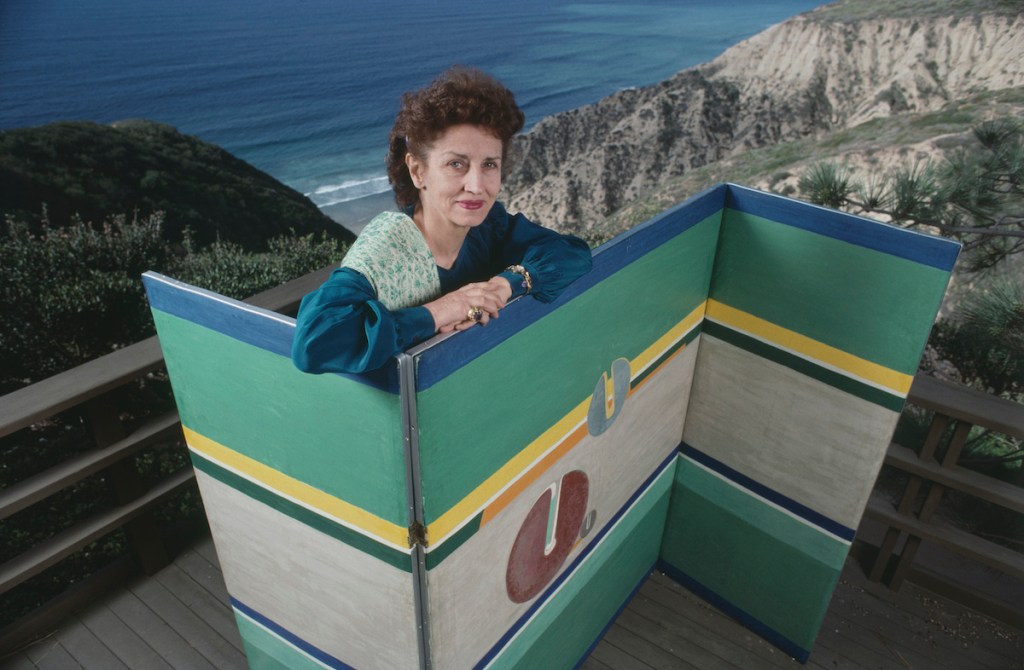Francoise Gilot Was More Than Picasso’s Muse—She Lived Life on Her Own Terms

Walking out on Picasso, as Françoise Gilot did in 1953, could not eliminate his impact on her own art and life. The ambiguity is right there in the final lines of what remains her most notable creation, the best-selling 1964 book Life with Picasso, coauthored with Carlton Lake: when she left Picasso, “he burned all the bridges that connected me to the past I had shared with him. But in doing so he forced me to discover myself and thus to survive. I shall never cease being grateful to him for that.”
It’s a peculiar statement that accords her rejected lover the motivating agency in her own self-discovery. And it’s unsupported by any careful reading of the rest of the book, which paints a clear-eyed picture of the world’s most renowned artist at the height of his fame, but also a vivid self-portrait of an inexperienced young woman from a privileged background—she was just 21 when she met the Spanish painter, who was 40 years her elder—who nonetheless had the sharpness of perception and toughness of spirit to enter an inherently unequal relationship without sacrificing her identity to it. I suspect that Gilot’s survival instinct was just as inherent as her sense of self. And survive she did: when she died this past June, she was 101.
Early on, Gilot experimented with abstraction but then seems to have accepted Picasso’s dismissal of abstract painting as merely a “kind of invertebrate, unformulated interior dream.” In any case, her paintings up through the 1960s are primarily representational—and, as with many French painters of her generation, they show the strong imprint of Picasso’s influence.
Later she began to alternate between imagistic and nonobjective modes, though she always attributed autobiographical content to her abstract works. In writing about her 1979–80 composition The Hawthorne, Garden of Another Time, a luminous arrangement of flat, clearly demarcated color forms, she described it as embodying “the recollection of looking toward my paternal grandmother’s garden in Neuilly”—the affluent Paris suburb where she was born in 1921—“through the red stained-glass windows of the billiard room on the second floor.” Distilling her memories and perceptions into abstract form, she often secreted fragments of imagery within her works, blurring the distinction. Still, it can be argued that it was in her efforts toward abstraction that Gilot achieved her true independence as an artist. There, she was free to use color, as she said, “to exaggerate, to go beyond, to pursue the extreme limit of what is suggested by the pictorial imagination.”
She also achieved double-barreled success, as both a painter and a writer: Though academic attention to her career has been scarce, her exhibitions were legion, and in 2021 a couple of her paintings sold for $1.3 million each through Sotheby’s and Christie’s. Her book Life with Picasso sold millions of copies worldwide and was succeeded by Matisse and Picasso: A Friendship in Art (1990) and the autobiographical Interface: The Painter and the Mask (1983).
In 1970 she married Jonas Salk, the American inventor of the polio vaccine, and began living for part of each year in La Jolla, California; she taught each summer between 1976 and 1983 at the University of Southern California. Following Salk’s death in 1995, she left California for the Upper West Side of New York.
Having learned from Picasso what she could, Gilot went her own way with equanimity, and without apparent bitterness. How many of us could do the same? The Guardian recently published a takedown of the “blatant sexism” of the obituary headlines for Gilot, which never failed to mention Picasso (e.g., the New York Times: “Françoise Gilot, Artist in the Shadow of Picasso, Is Dead at 101”). Guardian writer Katy Hessel asks, “does his name really have to be mentioned? Aren’t her career, her achievements, her name, enough to stand on their own?”
One retort would be that Gilot herself never believed that she had to sever her name from that of her former lover. Aside from writing two books about him, she was happy to exhibit her own work at the Musée Picasso in Antibes in 1987, and then in 2012 to cocurate a his-and-hers show of their work at Gagosian gallery in New York. So the answer is: yes, you do need to mention Picasso to understand Gilot, and that was something she was never ashamed of. Just don’t call her his “muse,” as did the Washington Post, among others. From the beginning, Gilot met Picasso as a fellow practitioner and not just the object of his adoring gaze.
It’s notable that the Brooklyn Museum’s exhibition “It’s Pablo-matic: Picasso According to Hannah Gadsby,” while claiming to present a feminist riposte to the artist’s well-known misogyny, has no room for the works of either of the women artists who knew him best, Gilot and Dora Maar. The show’s organizers might have discovered that Gilot knew better than most how to get over his arrogant brutality without neglecting everything in his work that’s so useful to other artists.
© 2023 PMC. All rights reserved.